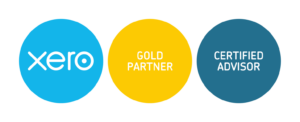Your Restaurant’s P&L: A Straightforward Guide to Staying Profitable in 2025

Running a restaurant in 2025 takes more than good food and great service.
You’ve probably got the hustle down already: managing staff schedules, keeping the kitchen stocked, making sure customers leave happy.
But when it comes to knowing if all that hard work is actually paying off financially, there’s one report that tells the real story: your restaurant P&L.
That stands for Profit and Loss statement, but don’t let the name scare you. It’s not some big, intimidating document… it’s more like your business’s personal check-up.
It shows how much money you’re bringing in, what you’re spending, and whether you’re ending up in the black or the red. If you want to keep your restaurant healthy, profitable, and growing, the P&L is the place to start.
Let’s walk through what it actually means and how to use it in your restaurant.
So… What Is a Restaurant P&L?
Think of your P&L as a simple summary of how your restaurant did over a certain period. You can look at it every month, every quarter, or once a year, depending on how closely you want to track things. It shows all the money that came into the business, everything you had to spend to earn that money, and what was left after the dust settled.
At the top, you’ll see your total sales. That’s everything customers paid you, whether they dined in, picked up, ordered delivery, bought catering, or even grabbed a bottle of your house-made sauce on the way out.
Then comes the cost of what it took to deliver that food and drink; things like ingredients, beverages, and packaging. After that, you’ll see all your other expenses: payroll, rent, utilities, marketing, and so on.
- Once you subtract all those costs, you land at the bottom line: did your restaurant make a profit or take a loss?
Now let’s unpack each piece a little more.
First Up: Sales (a.k.a. Money In)
This is the top of the report, the total revenue your restaurant brought in during the period you’re looking at. It includes every sales dollar that came through the register, whether from dine-in customers, takeout and delivery apps, catering orders, or even a few t-shirts you sold on the side.
What’s helpful here is not just the grand total, but being able to see where the money came from. For example, maybe your weeknight catering gigs are growing, or Friday lunch has gotten slower. Spotting those patterns early gives you a chance to adjust your game plan, like tweaking your menu, running a promotion, or shifting your staffing to match busy and slow times.
Also, pay attention to your top sellers. If one dish always flies out of the kitchen or a certain cocktail is a consistent favorite, it’s worth knowing if those items are making you a decent profit or just breaking even.
Next: Cost of Goods Sold (COGS)
This is the part that trips up a lot of restaurant owners, but it’s not as complicated as it sounds. COGS just means what you paid to serve the food and drinks your customers bought. Ingredients, alcohol, paper goods—whatever you needed to deliver the product.
You want to keep your food cost somewhere in the ballpark of 25–35% of what you made from food sales. So if you made $10,000 from food this month, ideally, you spent no more than $2,500–$3,500 on ingredients. If that percentage creeps higher, it’s worth asking why. Are portions too big? Are things going to waste in the walk-in? Or maybe your menu prices haven’t caught up with supplier increases.
Drinks have their own ballpark. Alcohol generally brings better margins, but it still depends. Draft beer is usually a solid value; often around 15–20% of the sale price. Bottled or canned beers might cost you a bit more per dollar sold.
For wine, it’s common to spend about 30–45% of what you’re charging. That might sound like a big range, but it makes sense when you think about the variety. Your house wine might have great markup, while a premium bottle brings in more cash per sale but a smaller percentage.
The goal here isn’t to memorize the “perfect” number. It’s just to know your numbers well enough that nothing sneaks up on you.
Gross Profit: What’s Left After Food and Drink
Once you subtract COGS from your sales, you’re left with gross profit. This is the money you’ve got left to pay for everything else—your team, your rent, the electric bill, marketing, and so on.
A healthy gross profit margin usually lands somewhere between 60% and 70%. If you notice that number shrinking, it might be time to take a closer look at your menu pricing or have a chat with your suppliers to see if there’s room to negotiate. Sometimes even small changes, like adjusting portion sizes or highlighting more profitable dishes, can make a big difference.
Now Let’s Talk Expenses
After gross profit, the rest of your P&L breaks down where that money went.
Labor is a big one. For most restaurants, wages are the largest single expense. Ideally, your total payroll (including front and back of house, plus taxes and benefits) should fall in the 25–35% range of your total revenue. If it’s higher, you might want to look at scheduling or training to make sure you’re getting the most from your team without burning anyone out.
Next up are your fixed costs: things like rent, insurance, internet, and utility bills. These don’t usually change much month to month, but they’re worth reviewing occasionally. Maybe there’s a better deal on your electric plan or a chance to cut back on usage during peak hours.
Then there’s marketing. If you’re paying for ads, social media help, or loyalty programs, make sure they’re actually driving customers through the door. If not, it might be time to try something new.
And Finally: Net Profit (Did You Make Money?)
Here’s the number everyone wants to know. After subtracting all your expenses, what’s left?
If you’re in the black, that’s your profit, and that’s worth celebrating. If you’re not, it’s a signal to dig deeper and figure out what’s eating into your earnings.
Losing money doesn’t mean you’ve failed. It just means you’ve got to troubleshoot. Is food waste higher than it should be? Are prices too low? Are you overstaffed on slow days?
The P&L can point you in the right direction. It’s not just a scoreboard, it’s a tool for decision-making.
How Often Should You Check Your Restaurant P&L?
Don’t let this report sit in a folder until tax season. The more often you look, the more useful it becomes.
With the help of Xero, you can get meaningful weekly reports to show you week over week trends. If you are not looking at reports weekly, at a minimum, you should be looking at them every month to take a few minutes to scan for surprises.
Did food costs spike?
Did revenue dip?
Did you blow past your labor budget during a slow week?
Every quarter, zoom out a little. Look for trends… maybe certain menu items are consistently underperforming, or your catering business is steadily growing.
Once a year, do a full review. That’s your chance to plan for upgrades, rethink your budget, and set goals for the next 12 months.
Final Thought: Know Your Numbers, Know Your Business
Your P&L doesn’t need to be a mystery. Once you understand the basics, it becomes one of the most useful tools you have as a business owner.
It shows you what’s working, what’s not, and where to focus your energy to keep your restaurant profitable.
And if this still feels overwhelming? That’s what we’re here for.
At U-Nique Accounting, we help restaurant owners understand their numbers and use them to make better decisions… without drowning in jargon.
We also make your P&L more powerful by utilizing the power of Xero’s custom financial reports, showing you food costs vs food sales, beverage costs vs beverage sales, and many other meaningful ratios.
Outside of your POS, it’s your next important business tool.
Let’s make 2025 a profitable, confident year for your business. Use the calendar below to schedule your first call.
Until next time.

By MATT CIANCIARULO



